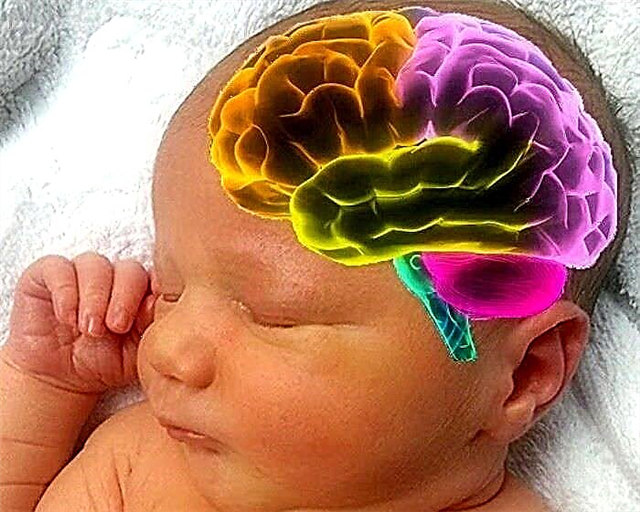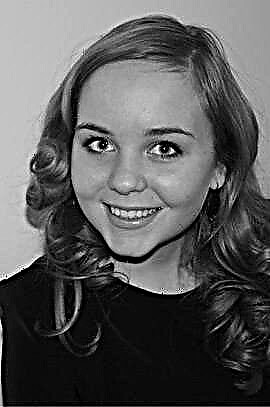It is often possible to hear that all newborns are similar to each other, however, any woman in labor will unmistakably recognize her if she was shown it immediately after birth. But external differences are important to the mother, and doctors evaluate and distinguish babies on the Apgar scale.

Newborn
Definition of the Apgar scale
The scale was named after its founder, Virginia Apgar, who proposed criteria for assessing newborns. According to them, the specialist should determine in a short time whether the infant needs resuscitation, or he is able to independently adapt to the new environment.
History of the technique
The Apgar scale for newborns has existed since 1952. It is a three-point integer (without fractions and decimal values) system for assessing five criteria for the state of the newborn. Anesthesiologist Virginia Apgar (not Abgar through "b" and not Akbar, as many say) gave a description of three states, which in a short time can be determined by an obstetrician, paying attention to 5 main points of behavior and physiology of a newborn:
- heart rate (pulse);
- skin color;
- reflex excitability;
- breath;
- muscle tone.
The values for each indicator can be from 0 to 2, inclusive.
Interesting. After the proposed version of the study of the newborn was approved, it was accepted as the main one all over the world and is still used today.
Algorithm for examining a newborn
The assessment of the condition of the newborn on the Apgar scale is carried out by a neonatologist, who is always present in the delivery room. If it is not possible to invite a neonatologist, for example, due to the large number of women in labor, then the child's condition is assessed by a nurse or midwife.
The first thing that happens to a newborn is that he is first wiped with a damp diaper, which is then changed to a dry, warm one. After wiping with a dry, pre-warmed diaper, a qualified professional should answer the following questions regarding the appearance and condition of the baby:
- Whether the baby is full-term.
- What amniotic fluid, is it clean? This is important because an opaque green liquid indicates that meconium is present in the waters - the original feces, which most likely entered the respiratory tract of the newborn, namely, the lungs. Yellow or light green staining indicates infection.
- Whether breathing and screaming are present.
- Is the child's muscle tone good?
If the doctor answers these questions positively, then the baby can be covered with a warm, clean diaper and put on the breast of the mother. Even if the baby was born after a cesarean section, it is given to the mother, since spinal anesthesia allows the woman to remain conscious.

On the mother's chest after birth
Indications for resuscitation care for an infant should be abnormalities noted in the first 30 seconds of his life:
- uneven, confused breathing, spontaneous heartbeat;
- pallor of skin color;
- identification of congenital signs of diseases.
Attention! With the timely detection of the slightest deviations in the first minute of a child's life, doctors have the opportunity to provide adequate and effective treatment.
When is the examination carried out
In medical institutions, future staff are taught that the Apgar score of a newborn should be carried out immediately after the dissection of the umbilical cord. After an operative analysis of the child's condition and making a decision to assess his development, the obstetrician transfers him to the resuscitation table, where he continues the examination. The cutting of the umbilical cord itself is not possible immediately, but only after the pulsation of its vessels has ceased to be noted. For the dissection, two Kocher clamps are applied: one as close as possible to the external genitals of the woman who gave birth, the other at a distance of 10 cm from the baby's umbilical ring.
Over the next 5-10 minutes, a more detailed study of the structural features of the body and the first toilet are carried out:
- using a paper tape measure the length of the body, the circumference of the head and chest;
- weighed on special scales;
- fasten bracelets on the wrists containing information about the mother, most often this is her surname and initials;
- to prevent eye infection, an acceptable amount of tetracycline ointment is placed under the lower eyelid;
- if the child is abundantly covered with original lubricant, it is carefully cleaned of it using a damp warm diaper.
Attention! The baby's weight, measured immediately after childbirth, will be recorded in a document that will contain both Apgar scores at the birth of a baby, his height, and many other information, despite the fact that after a few hours the baby's body weight will decrease by at least 500 g.

Baby on the scales
Apgar score table
Indicators that the obstetrician pays attention to when analyzing the health of the newborn
| Estimated condition | 0 | 1 | 2 |
|---|---|---|---|
| Pulse (heart rate) | No heart sounds | Less than 100 beats per minute | More than 100 beats per minute |
| Breath | Absent | Spontaneous, irregular, superficial, or delayed | Smooth, distinct, with a loud cry |
| Skin color | Pallor / cyanosis | The body is pink, the limbs with signs of cyanosis | Pink both body and limbs |
| Muscle tone | Not detected, limbs are hanging | Infrequent flexion of the limbs, weak tone | Active movements in the elbow, shoulder knee, hip joints |
| Reflex excitability | Absent | The reaction is present, but weakly expressed, manifests itself in the form of a grimace or movement | Sneezing, coughing, screaming in response to a stimulus |
Interesting. A pronounced reflex of a newly born child is to search for the mother's nipple while applying it to the breast. You can check this reflex by touching the child's cheek - in response to this gesture, he will open his mouth and turn his head towards the stimulus.

Infant on the resuscitation table
Breath
Not only the first cry is taken into account, although it in itself is a good indicator of the body's work, but also breathing. How often, deeply and evenly the newborn inhales depends on how much oxygen is received by the tissues and organs. With a lack of oxygen, multiple hemorrhages, functional disorders of the central nervous system can develop, which can result in circulatory disorders in the brain, serious somatic and psychomotor disorders, and even death in the neonatal period (in the first 28 days of life). The number of breaths should be close to 40-45 per minute.
Analyzing respiration at 1, 5, 10, and 15 minutes of life according to the newborn assessment scale, one can judge the dynamics of the extinction of possible asphyxia:
- at 1 minute, intrauterine hypoxia is judged;
- at the 5th minute, the effectiveness of the resuscitation actions performed is determined, a decision is made on the need for intensive therapy;
- at 10 minutes, the results of intensive care are judged;
- at the 15th minute, the result of the resuscitation emergency care provided is visible, and a prediction of the child's further existence after hypoxia is given.
Heart rate
Normally, a child's heart makes more than 100 beats per minute, the average value is close to 130 beats / min. If the heart is not beating intensely enough, resulting in a pulse below 100 beats per minute, the obstetrician puts 1 point in the Apgar table for newborns. If there is no heartbeat, the score is 0.
Muscle tone
A healthy full-term baby after birth actively uses the arms and legs, wiggling them chaotically. Such a child will receive 2 points. With unexpressed movement or the presence of only the ability to press the arms to the chest, and bend the legs at the knee joint, the score is 1. Hanging limbs, like whips, mean the absence of muscle tone, and therefore they are evaluated at 0 points. Such a child is indicated for tactile therapy in the form of a wellness massage or more serious medical care.
Interesting. In medical practice, there are cases when a child was born with an absolute lack of muscle tone, acquired it thanks to massage, and in adulthood became a professional who actively uses his once non-working limbs. Muscles do not know the famous "all or nothing" principle of the Nobel laureate in the field of medicine Edgar Douglas.
Reflex excitability
Reflex excitability is understood as an involuntary reaction of the body to external stimuli. Due to the fact that many newborns need sanitation of the upper respiratory tract, clogged with primordial mucus, reflexes are assessed during this procedure. A healthy active child, when a tube is inserted into the nasal passages, sneezes and coughs, and after a while protests with a loud cry, for which he is given 2 points. If the newborn reacted only with a grimace or implicit movement, then he gets 1 point. A child who does not respond to a stimulus is given 0 points.
Color of the skin
This criterion most clearly indicates circulatory disorders. A blue head or limbs are clear signs of a problem, not to mention a complete cyanosis of the whole body. Completely pink or, as they say, flesh-colored, the baby gets 2 points. The pronounced pallor of the skin also indicates violations and is an indicator for special attention from the medical staff.
Deciphering the coefficients of the child's condition
Most often, you can find a score of 7-8 in the documents, which indicates that the child is healthy and can be transferred to the postpartum department with the mother in two hours, if there are no other contraindications for that. A score of 10 is not often received.
Table 1 to 10
After an experienced neonatologist has analyzed the child's condition, the indicators for all five parameters are added up, and their sum is the final assessment of the baby's health.
Possible indicators with descriptions
| Total points | Conclusion about the child's condition |
|---|---|
| 0-2 | The child's condition is critical and requires urgent resuscitation. |
| 3, 4 | Frequent assessment of premature babies, indicating that the child needs close attention of the medical staff and appropriate assistance |
| 5, 6 | The child has minor deviations from the norm, he needs special care and increased attention from doctors |
| 7-9 | The child is considered healthy, capable of independent development and adaptation in a new environment, can be transferred to a common ward |
| 10 | An indicator of the excellent condition of a baby who is active from the first minutes of life |
Sometimes, when leaving the hospital, young parents find not one value on the discharge sheet, but two, indicated with a fraction or a hyphen. This suggests that the figure obtained in the first minute was rechecked after 5 or 10 minutes. The result obtained the second time turned out to be higher than the first, which clearly testified to the positive dynamics of the child's adaptation. After that, both numbers were entered in the report, the entry looked like this: "6-8 by Apgar".

Shout
These meanings do not mean good or bad child. They are needed for specialists who are responsible for providing timely assistance to an infant of the neonatal period. It is important for every mother to understand that if she was discharged from the maternity hospital for 4-5 days, and not 6-7 and later, this clearly indicates that she and her baby are healthy, correspond to "normal" indications in the postpartum period and they can independently, without close attention of medicine, learn together to learn about their body and the world, enjoying each other's company, completely forgetting what was written in the report: "8-9 according to Apgar" or something else.



